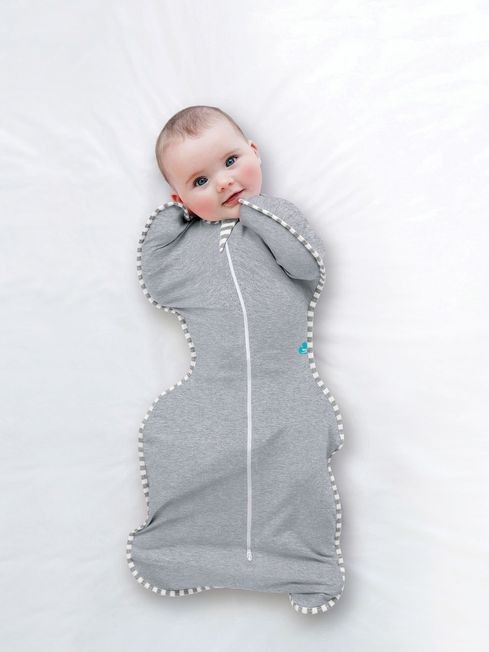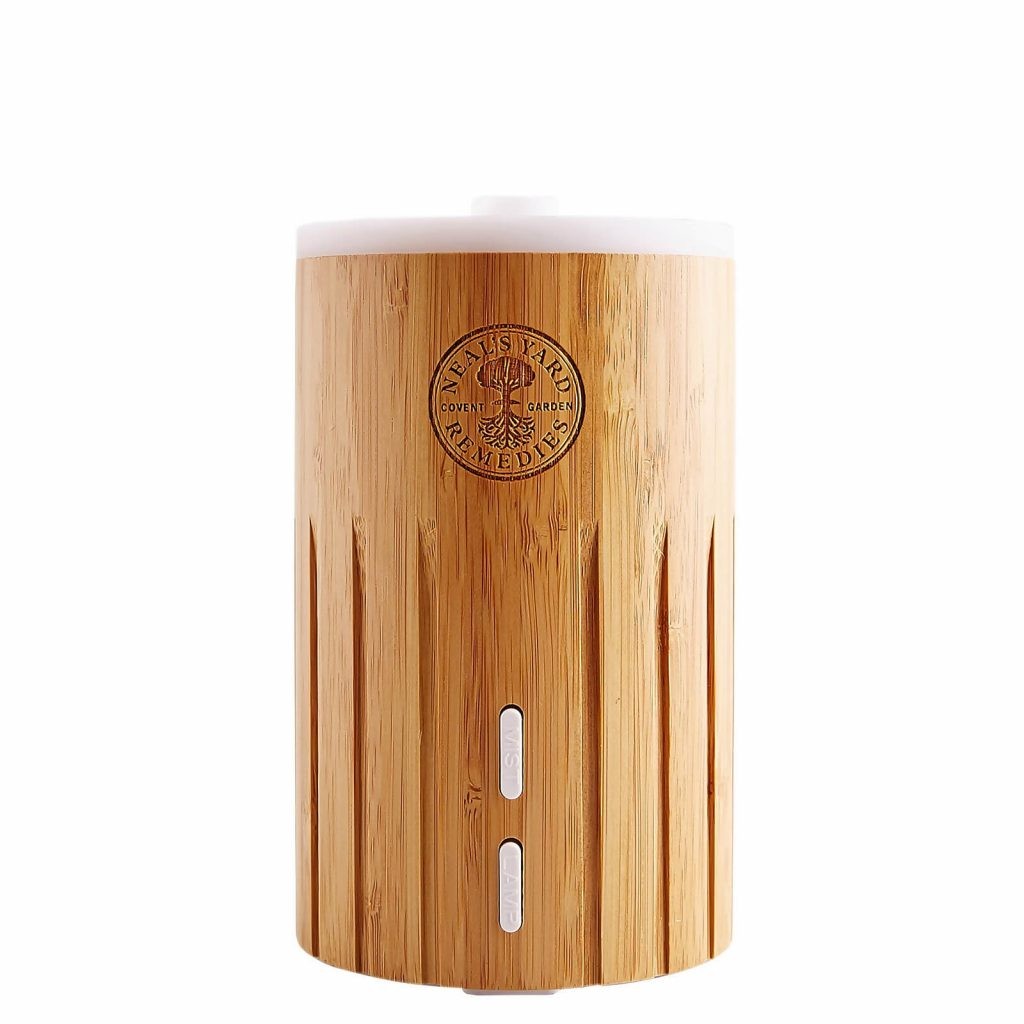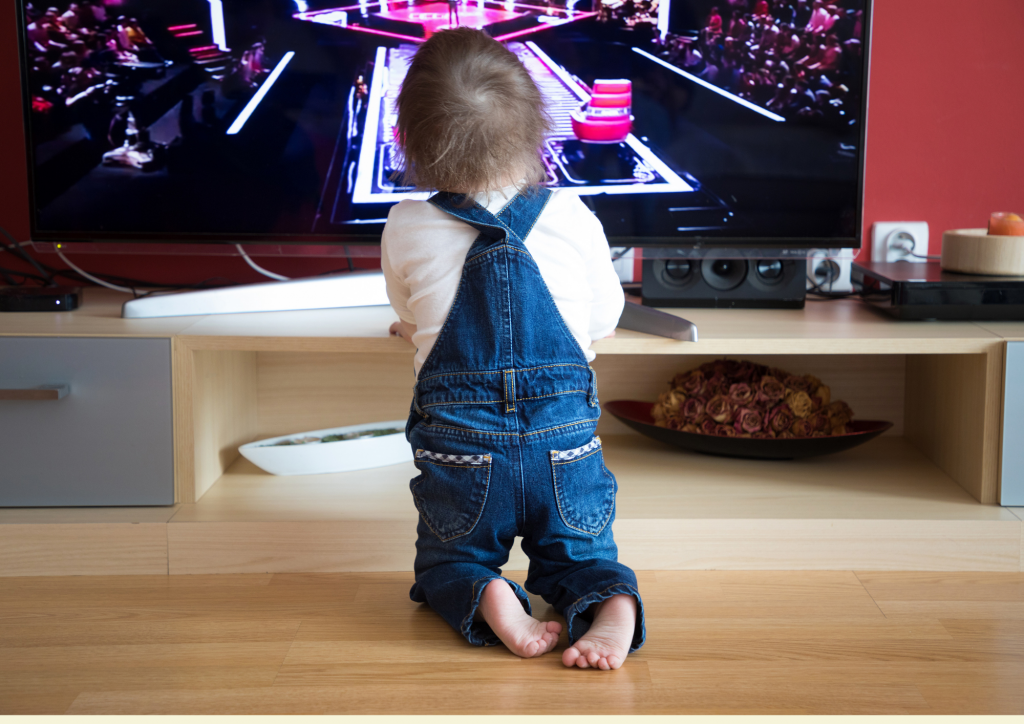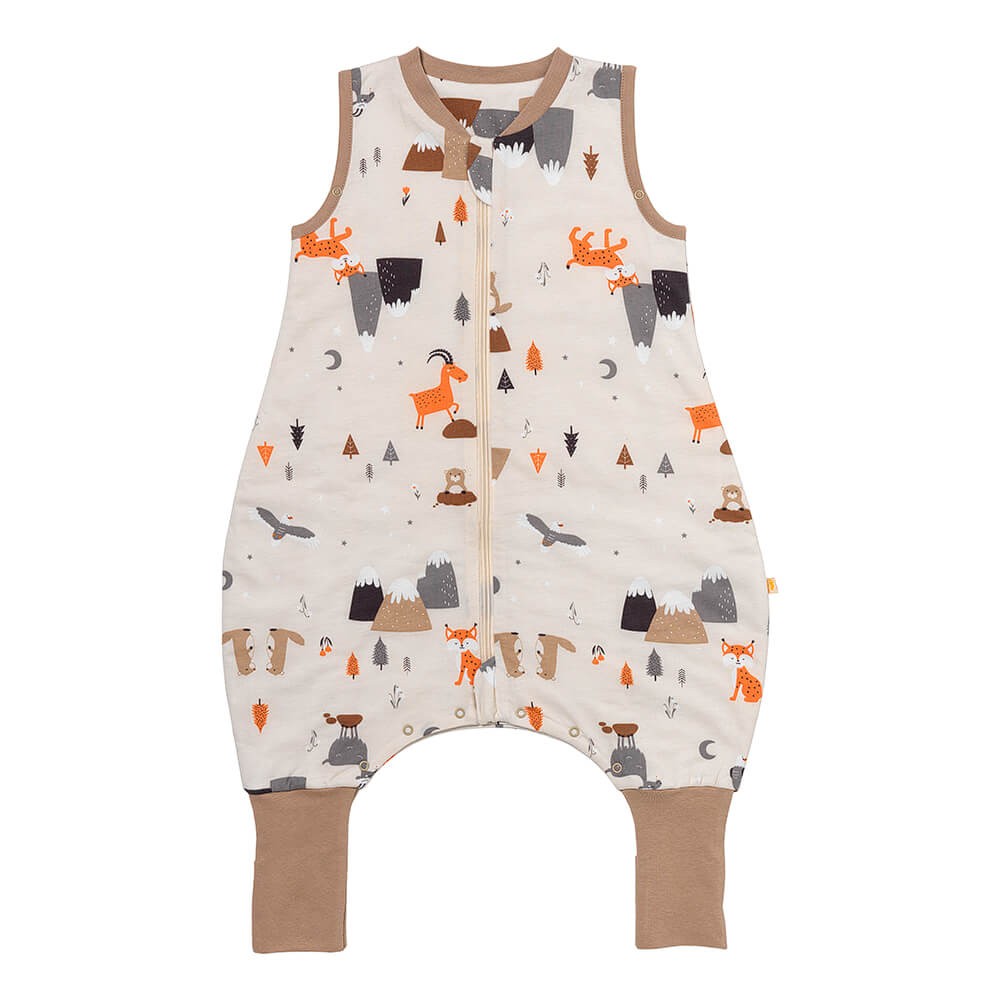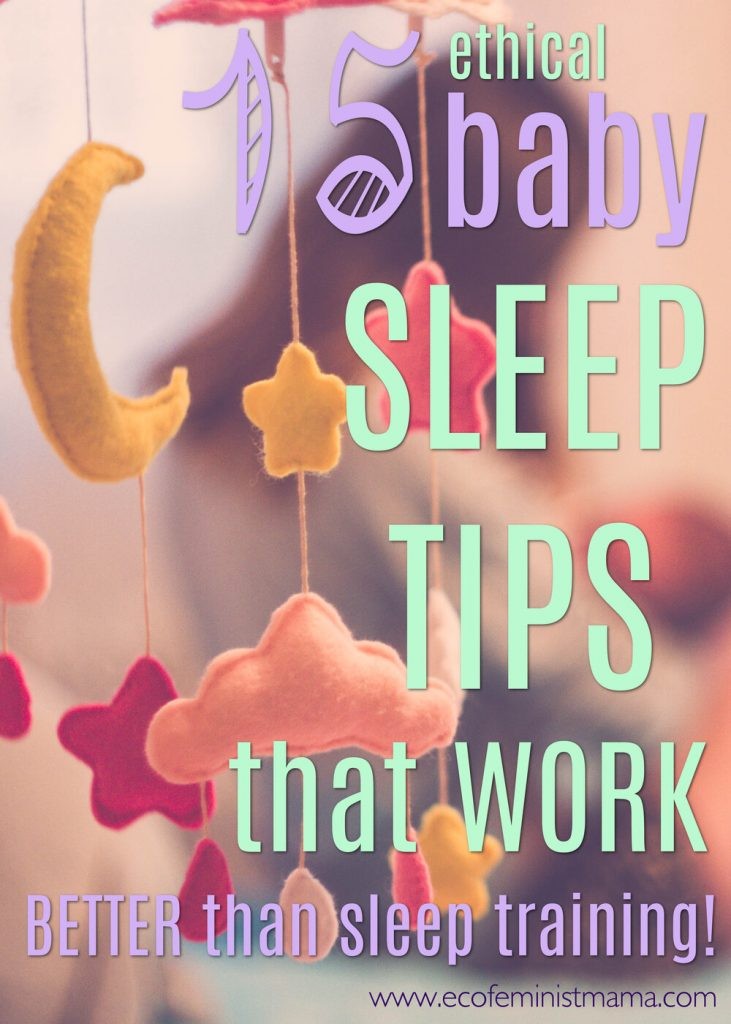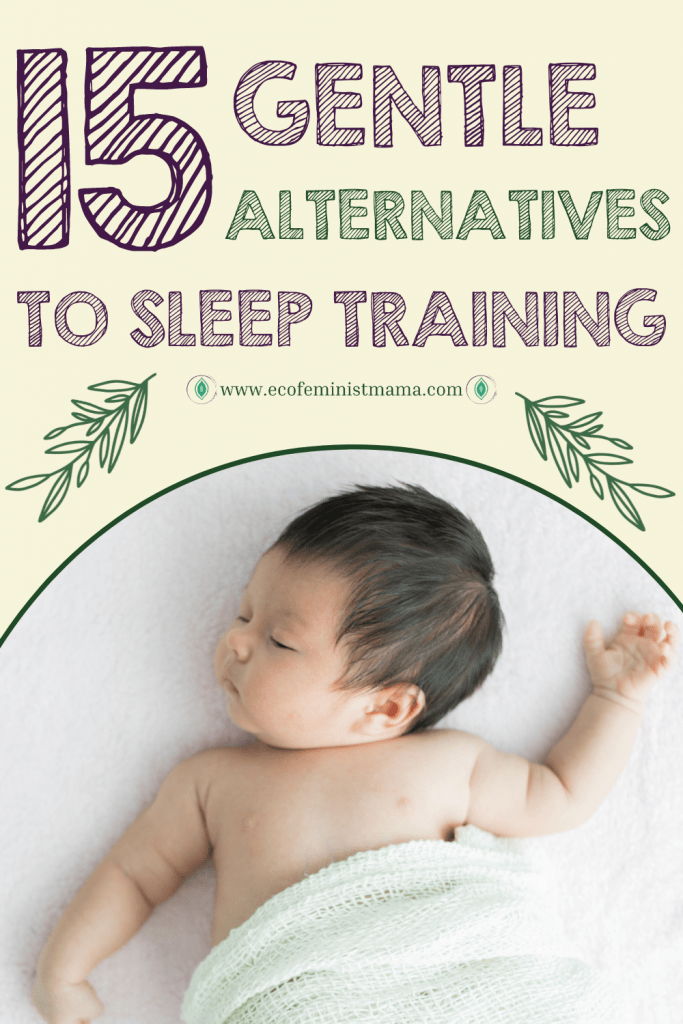When we become Mamas, we know we’re not going to get much sleep for the first few weeks, right? But I bet you had NO idea that you still wouldn’t get a full night’s sleep several months later! That doesn’t mean you want to resort to harmful sleep training though. You can read my full post on why sleep training baby is harmful here. But if you’re already sold, let’s look at what gentle alternatives to sleep training there are.
BABY! This is a reusable block, so whatever edits you make in it will apply everywhere it is used. If you want to remove this disclaimer from a post then be careful to delete the parent block (type ‘Reusable Block’ – icon is lego brick), and not to delete the group, image and/or the paragraph blocks (cos then they’ll be deleted from every instance of the reusable block).
Disclaimer: This post contains ethical affiliate links that I genuinely recommend. I may receive a small percentage of any purchases you make as a result of clicking those links. This comes at no extra cost to you and helps me to run this site. Read my full disclosure
Table of Contents
- 1. Work with their developmental stages
- 2. Introduce a bedtime (or nap time) routine
- 3. Use white or pink noise
- 4. Optimise lighting
- 5. Swaddling
- 6. Embrace co-sleeping
- 7. Either introduce or get rid of a bedtime bath
- 8. Use the power of scent
- 9. Get moving
- 10. Sing your heart out
- 11. Cut out screen time
- 12. Reduce your baby’s room temperature
- 13. Skin to skin and simple touch
- 14. Adjust wake up and bed times
- Get your FREE guide to ethical infant sleep!
- 15. Medical troubleshooting
1. Work with their developmental stages
First stop, if you haven’t already done this, download the Wonder Weeks app and input your child’s data.
All babies go through developmental leaps, where changes in the brain and body impact their mood and sleep. Around the time of these leaps, your baby will likely be grumpier, clingier, more prone to crying, and likely to resist naps. They also wake up more often in the night. There are a whopping 10 leaps in the first 18 months of life so the chances of your baby going through one are pretty high.
Alternatively, your baby might be going through a full-blown sleep regression. Check out my Ultimate Guide To Sleep Regressions for more information and tips on how to handle these.
2. Introduce a bedtime (or nap time) routine
Research has shown that infants and young children with a regular bedtime routine have more consistent sleep patterns. They also sleep for longer periods than those who don’t. The predictability of a gentle bedtime routine can do wonders for a baby’s sleep habits.
In terms of when to introduce a bedtime routine, my advice is to wait until the end of the fourth trimester (i.e. 12 weeks). Some people advise introducing a bedtime routine from day one, but in this sensitive period your baby is still getting used to life on Planet Earth! You’ll have a much easier time of it if you remain baby-led, responsive and flexible at first.
When you and your newborn have made it through those tricky 3 months, check out Sarah Ockwell-Smith’s guide below for how to gently introduce a bedtime routine.
Don’t forget that your baby’s naps could benefit from a special nap-time routine too. Something short like a story or song, a feed and getting into a swaddle or sleeping bag is enough.
3. Use white or pink noise
White noise is the combined sound of all the sound frequencies that the human ear can hear. It’s similar to that hissing sound you get between stations on a car radio. Pink noise is pretty much the same but with the bass end of the frequencies turned up slightly.
Both help (most) babies fall and stay asleep. One study showed that 80% of newborn babies fell asleep quicker to the sound of white noise. This is partly because it’s a similar sound to the loud whooshes that they heard in the womb.
Also, white and pink noise blocks out other sounds that might disturb the baby, while the consistency of sound helps them to connect their sleep cycles together. It’s therefore important to keep the noise running the whole time they’re asleep. I recommend investing in a white noise machine such as the Rockit Wooshh, rather than playing it from an app. This way you still have access to your phone in the evening.
It’s important that you make sure not to blast out white or pink noise too loudly. Research has found that many white noise machines are loud enough to damage an infant’s tender hearing. Make sure the white noise is placed at least 7-feet away from your baby. The volume should be no louder than the volume of the shower, or the sound of moderate rainfall.
4. Optimise lighting
At this point we need to talk a bit about circadian rhythms, commonly known as the “body clock”. It’s the body’s natural, instinctive daily cycle that work in response to light and darkness.
Our circadian rhythms help determine our sleep patterns. They influence how we wind down for sleep when it gets dark and gradually awaken when it starts to get light.
When babies are born their circadian rhythms are completely different to that of an adult. Their bodies literally have no idea whether it’s day or night. Therefore they don’t know when it’s time to be awake or time to be asleep.
In the first 3-4 months of life, babies gradually develop circadian rhythms and slowly their bodies learn the difference between night and day.
During the newborn period, babies should be exposed to as much natural daylight as possible during waking hours. They should also get as little light as possible at night.
Working to support your baby’s circadian rhythms is one of the simplest alternatives to sleep training you can use. It’s simply encouraging the natural sleeping habits that are already in them instinctively.
You can work with lighting to help promote your baby’s natural sleeping instincts in the following ways:
- Get them out of the house in the morning light as soon as you can. Even if it’s just in the garden or by an open window. Do try to be consistent, even when the weather is less than appealing.
- Invest in a black out blind for the room they sleep in. Shutting out as much light as possible will help foster sleeping hormones.
- Keep screens away from your baby at least 90 but preferably 120 minutes before bedtime. The blue light from screens has huge impacts on a baby’s ability to sleep and produce melatonin. Keep all screens off and away from your baby’s environment from 1.5-2 hours before bedtime.
- Invest in a night light that has been designed to emit low red lighting. Use this instead of your overhead or bedside lamps during nightly wakes. I recommend the Lumie Bedbug. It’s specifically designed to mimic natural lighting hues and provide sleep-optimised lighting that doesn’t interrupt your child’s sleeping rhythms.
5. Swaddling
One of the most ancient and traditional alternatives to sleep training is swaddling. It is a traditional practice that involves wrapping your baby up tight in a breathable piece of fabric to help them feel more like they did in the womb. It also prevents babies from flailing their limbs around and startling themselves awake.
Swaddling
I loved using Aden + Anais organic swaddle blankets for Ursula. The fabric is ridiculously soft, light and breathable and their prints are to die for.
If the thought of all that origami fills you with horror, try a swaddle bag like the Love To Dream Swaddle. They’re made from bamboo, a sustainable and breathable fabric. This will help regulate baby’s body temperature.
If you do decide to try swaddling, please read the NCT’s guide to safe swaddling first and bear in mind that only suitable for babies who aren’t yet rolling.
6. Embrace co-sleeping
The term ‘co-sleeping’ refers to any means of sleeping in the same room as your baby. Many use the term to refer to sharing a bed, but that’s just one way of co-sleeping. Having the baby’s cot in your room standing independently is also co-sleeping, or some use a ‘sidecar’ option where you attach your baby’s cot to your own bed.
The safest place for babies up to 12 months old to sleep is in the same room as an adult (including naps as well as night time sleep). Many parents in the Western world, however, try and make their baby sleep alone in their nursery after this age and this is often the cause of sleep problems. If you’re experiencing multiple wake-ups through the night, consider co-sleeping as an option.
Many parents find that once they find a good co-sleeping arrangement, the quality of their child’s sleep improves dramatically. Don’t worry about creating a “clingy” or “mollycoddled” baby. Nurturing a strong and secure sense of attachment through co-sleeping leads to more emotional security and confidence in later life.
If you think co-sleeping might be the answer to your sleep problems, please read The Lullaby Trust’s guide to safe co-sleeping. They also have a broader guide to safer sleep. Always make sure you have a high-quality, firm mattress if you are choosing to bed-share.
7. Either introduce or get rid of a bedtime bath
Giving baby a bath is a very popular part of a sleep-friendly bedtime routine.
Bathing your baby every night isn’t necessary from a hygiene point of view and can also dry out baby’s skin, potentially even causing eczema. However, the calming effect of baths on young babies can help persistent sleep problems as it can can stimulate a melatonin (sleep hormone) release.
Joining your baby in the bath is also one of my favourite baby sleep techniques for younger babies. They benefit greatly from pure skin-to-skin time, especially with their mother.
Water and a bath is all you really need, but you could always add an organic lavender scented baby-friendly bubble bath like Earth Friendly. Obviously lavender is well-known for its relaxing qualities and scent also acts as a sensory signal to baby that bedtime is on the horizon. In the early months, I used my postpartum herbs recipe below. It has an almost magical quality, making babies feel super relaxed and drowsy:
So why am I contradicting myself with the heading for this section and also suggesting that you DITCH the bedtime bath??
Well, at some point babies work out that water is FUN!!! After a certain age, out go the organic herbs and lovely skin-to-skin time, and in come the bath toys, big splashes and sensory stimulation.
Don’t be afraid to ditch the tradition nighttime bath if you think it’s over-stimulating your baby. I held onto Ursula’s for way longer than I should have, because a bedtime bath is just what you DO, right? Not when it’s making your kiddo hyped-up and over-excited it’s not! If you want a post-dinner, pre-bed activity for your toddler that won’t overstimulate try gentle stories, puzzles, building blocks or another quiet activity that encourages focus and attention.
8. Use the power of scent
A successful bedtime routine incorporates a number of signals to let your baby know what’s coming next. Babies and toddlers feel safer and more secure knowing what’s happening. Babies are very sensory beings and communicating with them through the senses is a great way to engage them.
Add scent to your bedtime routine by using essential oils in a diffuser. Set it going in the room where your baby will sleep at least half an hour before you take them in. The obvious choice is lavender but if you fancy trying something different, other sleep-friendly scents include:
- Cedarwood – has mild muscle relaxant qualities
- Chamomile – naturally calming, chamomile helps soothe emotions
- Geranium – has a mild sedative effect
- Jasmine known for its calming effect and may help reduce tossing and turning
Important: the above essential oils are all safe to use in a high-quality diffuser from 6 months upwards. Always check that any essential oil you use is safe for your baby. Never use any essential oil neat and undiluted on their skin.
9. Get moving
It’s perfectly normal and natural for your baby not to be able to fall asleep by themselves. Babies get used to constant movement while they’re in the womb. Moving them to sleep is therefore what they expect.
The fact is that babies aren’t developmentally capable of putting themselves to sleep in the same way as adults, no matter what the sleep training industry tells you.
If you’re struggling with how to get them to sleep in the first place, try a few moves that worked with my babies:
- Hold them over your shoulder and pacing quickly back and forth
- Hold them in a rocking positing and gently bounce up and down, like you’re doing pliès
- Sway side to side
- Sit on a yoga ball and bounce
- Put them in a carrier, walk around the garden or block while talking gently and slowly about the things you see
A strong but soft and supportive carrier will be invaluable for this tactic, especially as your baby gets bigger. If you don’t already have one, I highly rate the Caboo Lite for babies up to approximately 6-9 months, or the Freerider Co. Sierra for older babies and toddlers.
10. Sing your heart out
The sight of a mother gently rocking her baby to sleep while singing a lullaby is a bit of a cliché these days. Like most good clichés, it’s become one because it’s true.
Sending our babies off to the gentle sound of a lullaby is something mothers have been instinctively doing for centuries. With good reason, too! One study from Great Ormond Street Hospital showed that hospitalised children had reduced pain and increased emotional wellbeing from being sung lullabies. And another study among preschool children found that sleep was improved for those who had music playing at bedtime.
Singing a soft lullaby, especially if it’s meaningful to you, is a lovely way to connect with our babies. Don’t worry if you think you “can’t sing”. Babies respond to the sound of your voice as their mother. They don’t care if you don’t have perfect pitch! If you allow yourself to slow down and sing lovingly from your heart, your baby is very likely to feel soothed and respond positively.
If you really tense up at the idea of singing, then the Moshi Sleep app has a range of beautiful lullabies that do a wonderful job of recreating that simple, sweet motherly atmosphere. They have a free trial but honestly, we have been investing in their annual subscription since about 2020 and it is so worth it for us (that’s not even an affiliate link, we genuinely do love Moshi!) The lullabies are perfect for our youngest, Rowan, and our older daughter Ursula falls asleep every night to the bedtime meditations. Well worth the investment in my opinion.
11. Cut out screen time
As a society we seem to be sleepwalking to giving our young children more and more access to screens, but I for one am fiercely anti-screentime for as long as possible. There are a number of reasons why screens are damaging our kids’ brains, which you can read about in the very excellent but alarming Reset Your Child’s Brain by Dr. Victoria Dunckley.
Meanwhile, the American Association of Pediatricians (AAP) advise that children under 18 months old shouldn’t be given any screen time at all, for a number of reasons:
- Screen time distracts and takes time away from valuable physical activity that uses enough energy to sleep soundly. This applies even to non-mobile babies. Lying on a playmat and exploring how their limbs move still counts as physical activity.
- The light from screens inhibits the body’s ability to produce the hormones needed for peaceful sleep.
- A high intake of screen-based content during infancy and early toddlerhood is associated with cognitive and social delays.
Since reading these guidelines, my daughter has only had a very limited amount of TV time. Even at nearly six years old, I do notice that her sleep suffers if I allow longer than 30-45 minutes a day.
It might severely impact your baby’s sleep if the TV is on all day or used as part of your bedtime routine. See what difference it makes if you cut it out during your baby’s waking time and introduce a rule of no screens in the two hours before bed.
12. Reduce your baby’s room temperature
Most of us know that the temperature of the room baby sleeps in is important for reducing their risk of SIDS. The Lullaby Trust recommends between 16-20ºC for this reason. In addition, a room at the cooler end of this may improve the quality of your baby’s sleep.
Studies suggest that a cooler body will sleep deeper. When our bodies get too hot our sleep will be lighter and we’ll be more prone to waking. As tempting as it is to wrap our precious bundles up all nice and cosy, you may be adding to a disruptive night. A cold room and a warm body will provide the most optimal sleep environment in terms of temperature.
Make sure your baby’s core temperature can self regulate by putting them in a sleep sack with feet. This will help to keep them warm without overheating and addition of the feet will get rid any wake ups caused by the restriction of a sleeping bag.
If keeping your room cool is a challenge for you, I feel you. Ursula was born just as an almighty heat wave hit the UK. Nothing I did could keep our bedroom less than 24º at night, even though our flat was generally very cool.
Your best chance here is keeping the room cool throughout the day by closing the windows, curtains and blinds. Then circulate a fan in the run up to bedtime and dress them in just a nappy and vest. Keep nightwear and bedding to a minimum. Do remember that the temperature may drop during the night so keep a summer sleeping bag on standby.
13. Skin to skin and simple touch
Ever wondered why it’s tough to stay awake during a really good massage? Skin to skin contact is one of the biggest triggers for releasing the hormone oxytocin. A 2003 study showed that oxytocin may help to promote sleep, so increasing skin to skin contact with them may help.
Giving your baby a massage as part of their bedtime routine is a wonderful way to spark off that lovely oxytocin-fest for you both. It will help to soothe and comfort your baby, massaging away any tension in their hard-working and rapidly developing muscles. Meanwhile, skin to skin connection helps you to connect and bond with them.
You don’t need any special training to do a baby massage but this is an excellent video to watch for tips.
14. Adjust wake up and bed times
If you’re desperate for your baby to sleep more, take a deep breath and make sure you’re sitting down for this. It’s possible that your baby doesn’t actually need as much sleep as you think or hope they do. Sorry!!
Take a look at the chart below from the National Sleep Foundation:
If your baby is 6 months old, on average they need roughly between 12 and 15 hours. But anything as low as 10 hours or as high as 18 hours is also perfectly fine. So if you have a baby who has lower sleep needs and they’re taking 2 hour’s worth of naps, they may only need 8 or 9 hours at night.
That means f you’re putting them to bed at 7pm then they’d naturally be done with their total sleep by 4 or 5am. If you’re expecting them to stay in bed relatively happily until 7am, you’re going to have a problem! That can look like resistance to falling asleep, a 4-5am wake up, or a series of prolonged wake ups overnight.
Solve this problem by gradually adjusting their bedtime to be later and their wake up time to be earlier. It’s important to adjust bedtimes only by 15 minutes every 2-3 days to avoid overtiredness. You also need to be patient and not expect an instant miracle. All of us take time to adjust to changes surrounding sleep, including babies. Think of them as having jet lag for a week or two!
For more support in calculating and optimising your baby’s sleep times, download my free ethical sleep guide below:
15. Medical troubleshooting
If you’ve tried everything I’ve suggest and your baby is still having significant sleep problems then it’s time to look at medical troubleshooting. There might be something else going on. Issues that can impact sleep include dietary intolerance, glue ear, severe reflux or digestive problems.
I recommend the Evolutionary Parenting Brief Infant & Toddler Sleep Screening as an excellent place to start. It’s a short questionnaire that will assess whether your baby’s sleep patterns might require medical investigation.
Of course if you are concerned for your baby’s health, please visit your GP or health visitor. And don’t let them try and talk you into sleep training…!
These baby sleep techniques work together to create an optimal sleep environment. They address the cause/s of your baby’s frequent wakes and/or make wake ups easier for you to cope with. If you combine all these baby sleep techniques, you can make a massive difference to the quality of your baby’s sleep.
That said, the biggest improvement you can make is to ensure you have realistic expectations. Most of the so-called “problems” of baby sleep are in fact perfectly normal behaviour. A 3-month old who needs to be held, can’t put themselves to sleep or won’t sleep through the night is NORMAL! Resetting your expectations and thinking of night wakes as “nighttime parenting” can help you to make peace with the reality of infant sleep.
Wishing you all the best on your nighttime parenting journey with your little one.



